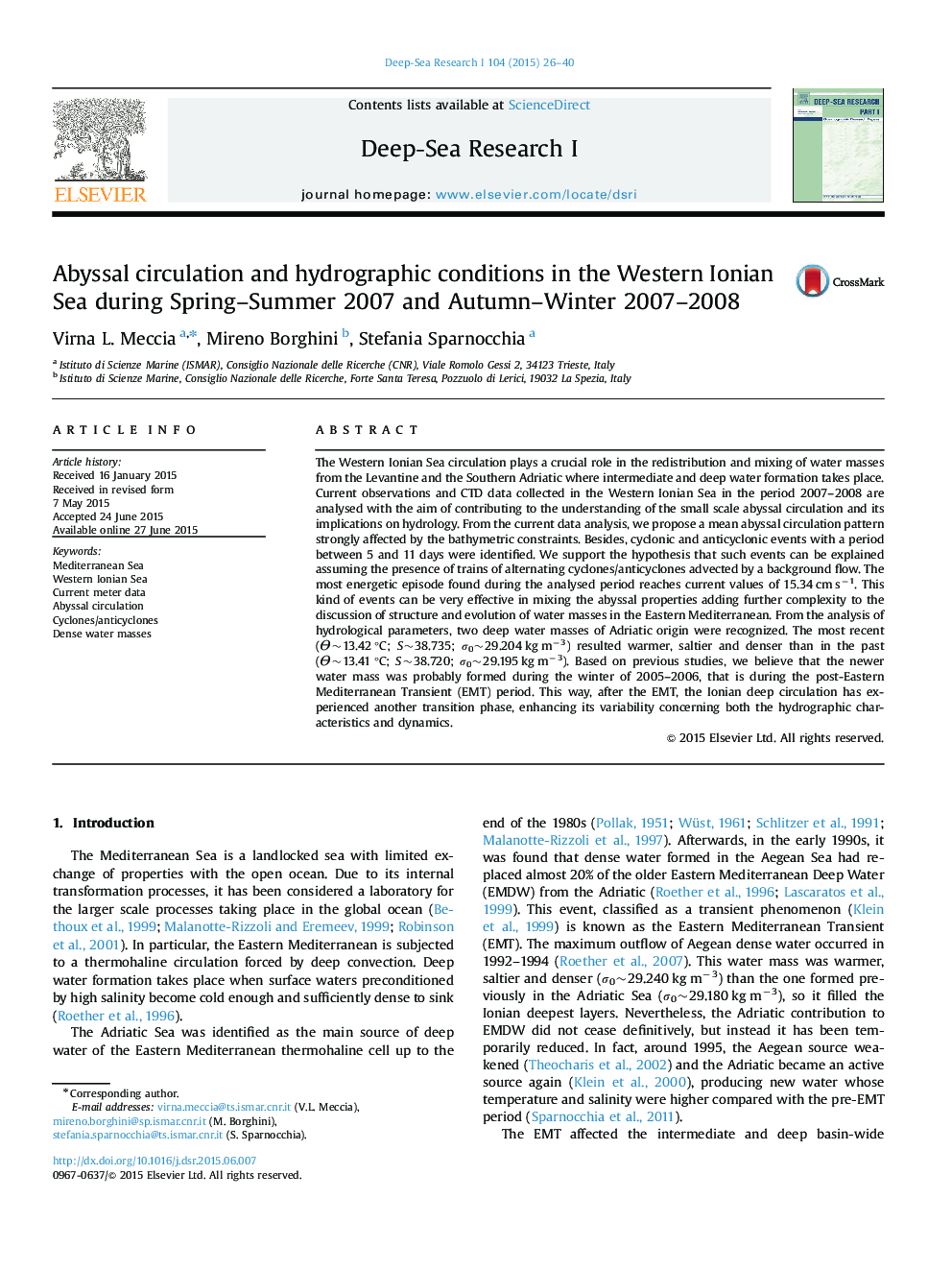| Article ID | Journal | Published Year | Pages | File Type |
|---|---|---|---|---|
| 6383411 | Deep Sea Research Part I: Oceanographic Research Papers | 2015 | 15 Pages |
Abstract
The Western Ionian Sea circulation plays a crucial role in the redistribution and mixing of water masses from the Levantine and the Southern Adriatic where intermediate and deep water formation takes place. Current observations and CTD data collected in the Western Ionian Sea in the period 2007-2008 are analysed with the aim of contributing to the understanding of the small scale abyssal circulation and its implications on hydrology. From the current data analysis, we propose a mean abyssal circulation pattern strongly affected by the bathymetric constraints. Besides, cyclonic and anticyclonic events with a period between 5 and 11 days were identified. We support the hypothesis that such events can be explained assuming the presence of trains of alternating cyclones/anticyclones advected by a background flow. The most energetic episode found during the analysed period reaches current values of 15.34 cm sâ1. This kind of events can be very effective in mixing the abyssal properties adding further complexity to the discussion of structure and evolution of water masses in the Eastern Mediterranean. From the analysis of hydrological parameters, two deep water masses of Adriatic origin were recognized. The most recent (Ï´~13.42 °C; S~38.735; Ï0~29.204 kg mâ3) resulted warmer, saltier and denser than in the past (Ï´~13.41 °C; S~38.720; Ï0~29.195 kg mâ3). Based on previous studies, we believe that the newer water mass was probably formed during the winter of 2005-2006, that is during the post-Eastern Mediterranean Transient (EMT) period. This way, after the EMT, the Ionian deep circulation has experienced another transition phase, enhancing its variability concerning both the hydrographic characteristics and dynamics.
Related Topics
Physical Sciences and Engineering
Earth and Planetary Sciences
Geology
Authors
Virna L. Meccia, Mireno Borghini, Stefania Sparnocchia,
